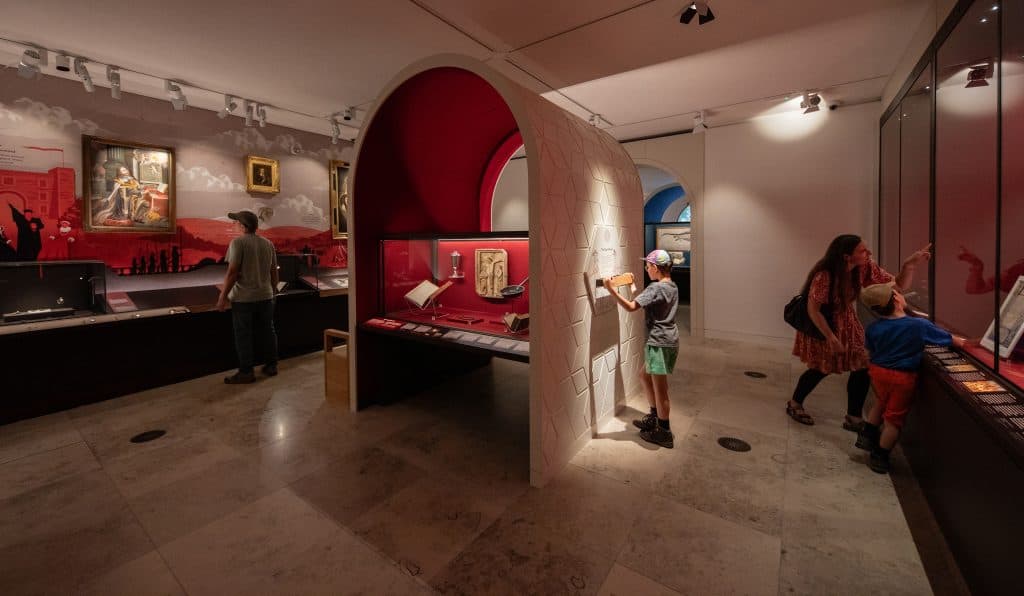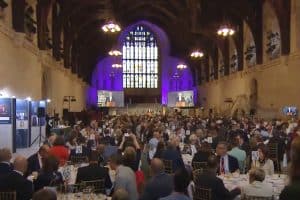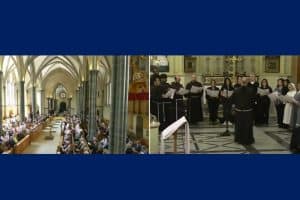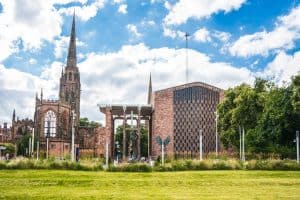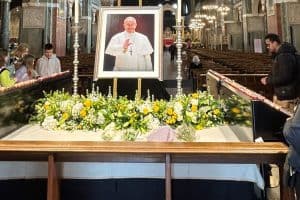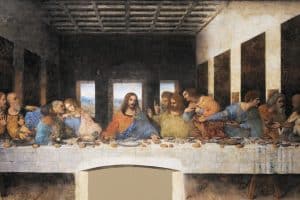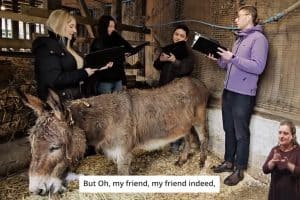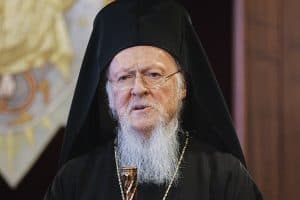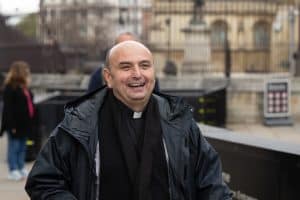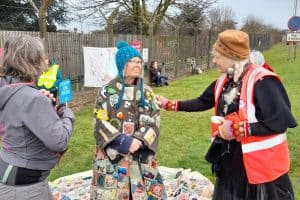By Catherine Pepinster
When Britain’s first Faith Museum opens its doors today it will be the culmination of an ambitious multimillion-pound project to transform the northeast town of Bishop Auckland into a tourist destination. But according to the man behind the museum and the rest of the what’s called the Auckland Project, it is not the mountain of money invested that has brought it about.
“It’s nothing to do with cash,” says the millionaire philanthropist Jonathan Ruffer. “It’s to do with prayer.”
Ruffer, who made his fortune in the City as an investment banker and describes himself as “very goddy”, says that the project came about because of an eight-day silent retreat, run by the Jesuit order. “It was simply supposed to be a wash-and-brush-up but when I was there, I was mugged [by God], challenged to turn my life into one that was working with the voiceless wherever I chose,” he recalls.
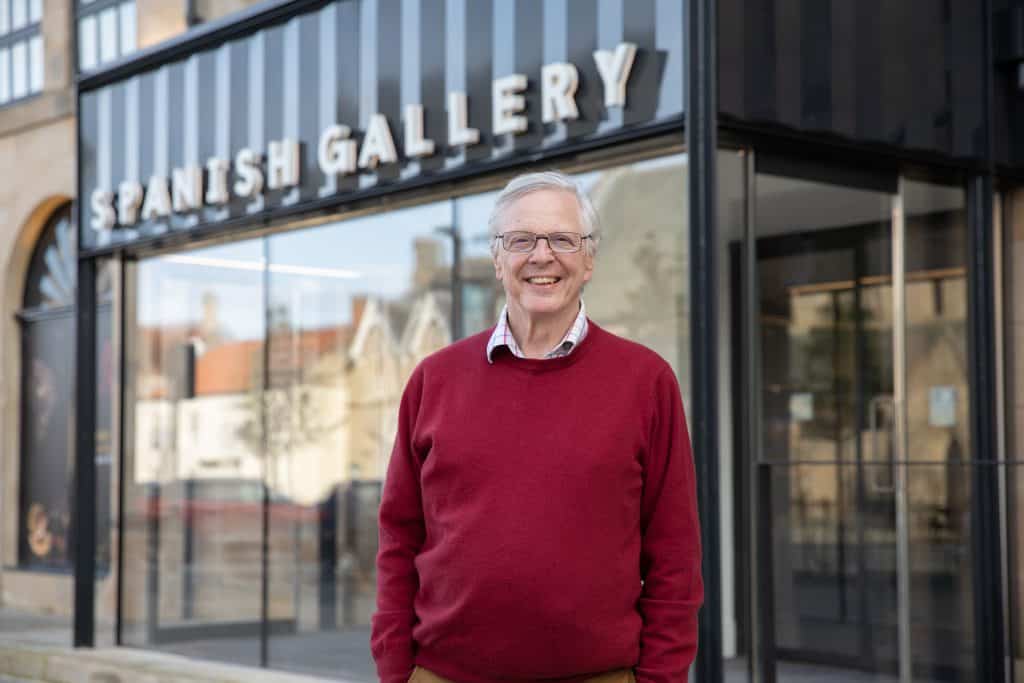
“At first, I thought it meant becoming a patron saint of the soup ladle but when I told somebody they challenged me and said would I be any good at that.
“Eventually I said, ‘Well, I’ve got a nice smile’ and they looked at me with complete contempt and said, ‘So you think your nice smile will get someone off drugs?’ I absolutely realised I couldn’t do it. It wasn’t that I didn’t fancy it, I couldn’t. So then it was back to the melting pot.”
Then several key issues came together. Ruffer comes from the northeast; he was looking for something to do that would make a difference; the Church Commissioners were at the time looking to offload a set of paintings, Jacob and His Twelve Sons, by the Spanish master Francisco de Zurbarán, which were displayed in the dining room of the Bishop of Durham’s castle in Bishop Auckland. Ruffer has a particular passion for Spanish art and a substantial collection of his own.
The paintings were the start, he says, of the entire Auckland Project. Negotiations with the Church Commissioners, however, were fraught. The Zurbaráns came with the castle and they wanted £15 million. He says that he never wanted to take on a building — “I don’t like them, I’m frightened of them” — and viewed the castle as a liability that needed considerable repair. At one point he walked away from the issue, drawn back, he says, by the then Bishop of Durham’s endeavours.
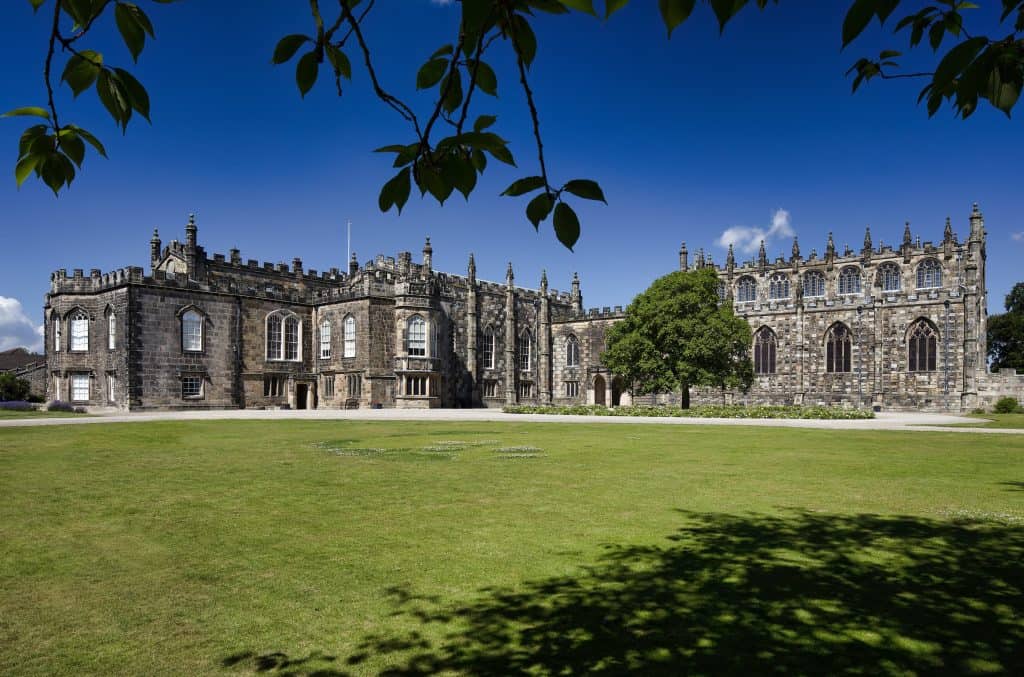
Justin Welby, now Archbishop of Canterbury, brought about reconciliation between him and the commissioners — a peace-making venture that partly involved meeting in a peace yurt at St Ethelburga’s in the City of London. After first offering £15 million for the Zurbaráns, he finally secured the castle and the pictures for £11 million.
An additional £12.4 million has come from the Heritage Lottery Fund as well as grants from the Sainsbury Trust and the Laing Foundation. Government levelling-up money has also poured in to post-industrial Bishop Auckland, while Ruffer himself has spent well over £100 million. Three charities have been created to run the projects, with one, the Zurbarán Trust, holding the paintings and other valuables.
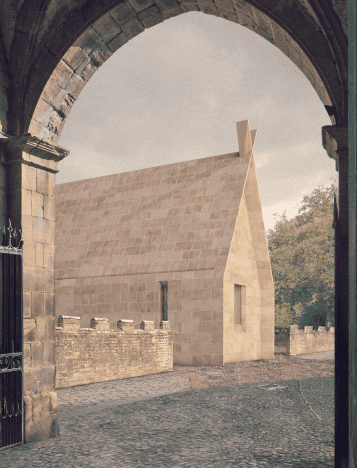
Now, 13 years on from Ruffer’s silent retreat and an idea that he should save Zurbarán’s masterpieces, the Auckland Project is nigh on complete. It includes the Bishop’s Castle, where the Bishop of Durham retains an office and the chapel is used every week for a communion service, the Spanish Gallery of old masters, which includes paintings by Velasquez, El Greco and Murillo, Auckland Castle’s Gardens, the Deer Park, a gallery dedicated to mining art, and a new Auckland viewing tower, rather like a colliery winding tower, offering panoramic views of the surrounding County Durham countryside. Its architect, Níall McLaughlin, has also created a striking extension to the castle’s 14th-century Scotland wing of the castle to create the Faith Museum.
The museum begins with a gallery tracing the origins of faith in Britain from 6,000 years ago, and ends with half the museum dedicated to contemporary artists and their personal responses to faith. In between are timelines and accounts of the dramatic highs and lows of faith in Britain and a collection of more than 250 objects from private and personal collections across the country. Loans will be displayed while the Faith Museum builds its own collection.
Among the highlights is a never-before-displayed object found less than a mile from the castle: the Binchester Ring. The silver ring was discovered during an excavation in 2014 at Binchester Roman Fort, and its carved carnelian stone inscribed with an anchor and fish is rare early evidence of Christianity in Britain.
There are many objects charting the growth of Christianity in Britain and its later divisions including the Reformation and the rise of dissenting traditions. Among these is a medal struck to commemorate Henry VIII being given the title Defender of the Faith in 1521 by a grateful Pope Leo X, when Henry wrote a defence of the Roman Catholic Church to counter the criticisms by Martin Luther.
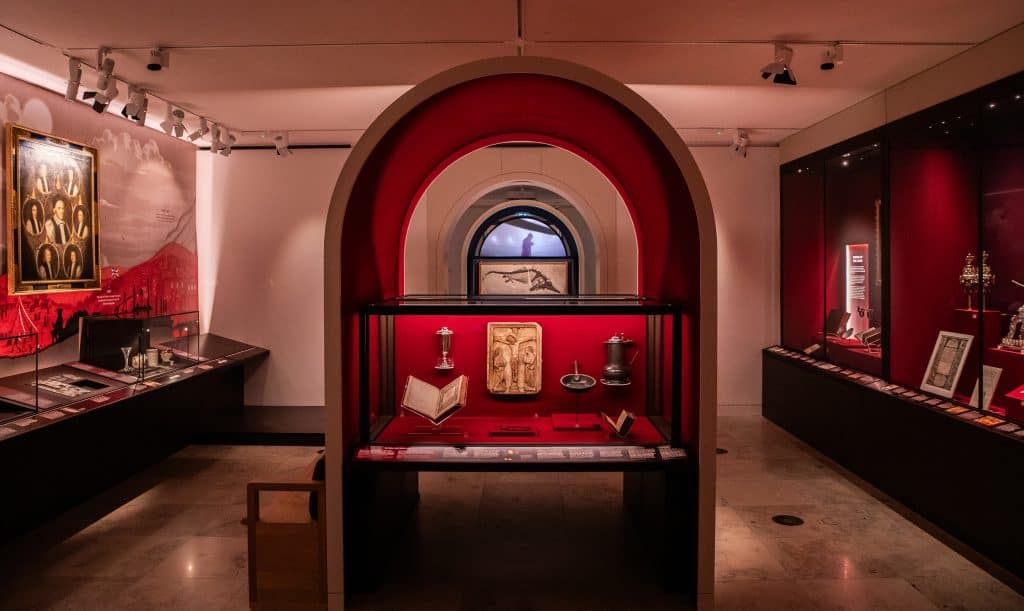
The title has been used by British monarchs ever since, although Henry broke away from the church in 1531, and another item in the museum highlights the persecution of Catholics during the English Reformation. An altar frontal made from fragments of embroidered blue velvet was probably created after 1600 from vestments worn by pre-Reformation priests, symbolising the preservation of the Catholic faith.
There is also a 1535 document listing the annual incomes of 160 monasteries around Britain, after Henry VIII decided to tax them. Eventually he had them dissolved.
The turmoil of religion is also highlighted by a rare example of William Tyndale’s English translation of the New Testament — a translation that led to his execution for heresy in 1536, and a wooden pulpit from 1760, from which the Methodist preacher John Wesley spoke when he visited the north of England. Among the displays illustrating Christian charity are items related to the Salvation Army, including a set of brass musical instruments made at the army’s musical instrument factory.
The presence of other religions in Britain is highlighted, too, in the displays, including the 13th-century Bodleian Bowl, an early example of evidence of Jewish communities in Britain. This decorated bronze vessel is inscribed with the name of Joseph, son of Rabbi Yechiel, a famous scripture scholar of Paris. Joseph lived in Colchester and may have given this bowl to the Jewish congregation there before leaving for the Holy Land.
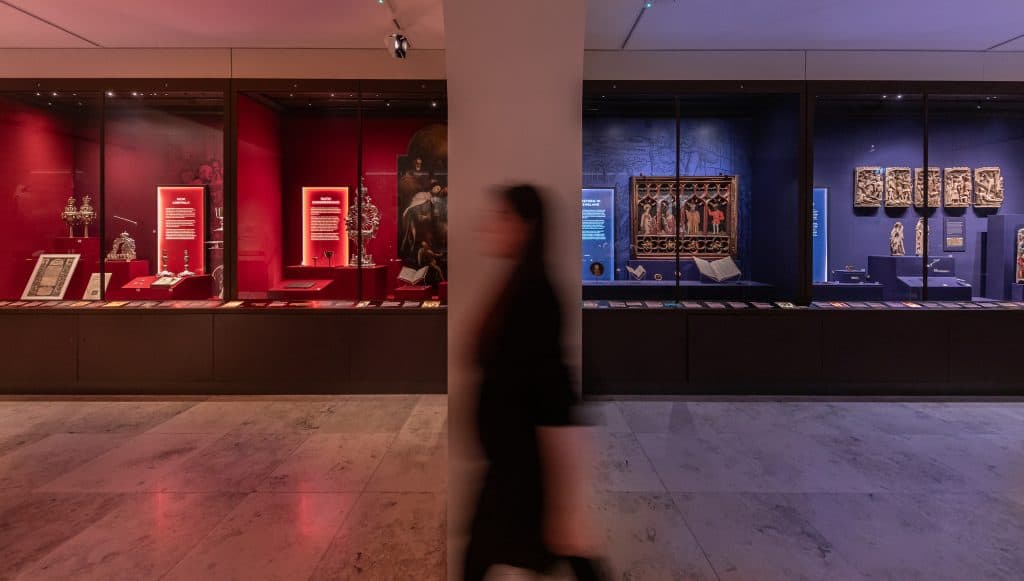
There are also the prayer beads of Rowland Allanson-Winn, the 5th Baron Headley, who became a Muslim in 1913 — the first convert to Islam in Britain.
Amina Wright, senior curator at the museum, says all the items on display form a narrative of faith, “Every object is seen as a witness to faith, showing the impact of faith on Britain,” she says. But when it comes to the present, the task was harder. “We can’t explain the past 23 years in the same way. We need more distance go gain a perspective,” she adds.
There is also a difficulty for the curators in finding striking objects when so much response to faith is digital, she explains, “so we used artists to reflect faith instead”.
According to Jonathan Ruffer, the museum was his “comfort food for taking on the castle”. He said: “What I could see was that there is no faith museum anywhere and the fact that it’s taken us 10 years to get to — it was the only specific, tangible thought I had and it’s the last thing to fall into place”.
Ruffer became a serious Christian, he said, at Cambridge University in the late 1960s. At first he was attracted by evangelicals: “I’m a tree-hugger so I thought it would be good to get the discipline that comes with being linked to truth.” He has long been an Anglican but says if he had to define himself today, he would say Roman Catholic.
What he does not want to do with the Faith Museum, he says, is proselytise. Rather, he is on a mission to explain. “I do think that what we are trying to do here hasn’t been done before. That doesn’t make us pioneers. It hasn’t been tried because it is impossible in an age like this when there is such an animus against people with faith and those with faith are often vituperative towards others with faith.”
Despite his antipathy towards buildings, he has ended up founding a project filled with them, including not only museums but a tapas bar next to the Spanish Gallery and a hotel. Together with a summer pageant known as Kynren, and plans for a leisure park, they will help to attract to Bishop Auckland between 1 million and 1.5 million visitors annually by 2028, Ruffer predicts.
As if that is not ambition enough, he is now aiming for something more — to buy the six-metre gold braid tapestry, Saint Paul Directing the Burning of the Heathen Books which was commissioned by Henry VIII when he declared himself supreme head of the Church of England. It was missing for years but turned up in Spain.
The Spanish government says it can return to Britain if the Faith Museum can raise £4.55 million. Ruffer is looking for donations but no doubt he will turn to God again. A space for it in the Great Gallery at the Faith Museum awaits.
Thousands of years of faith in art Link>>

